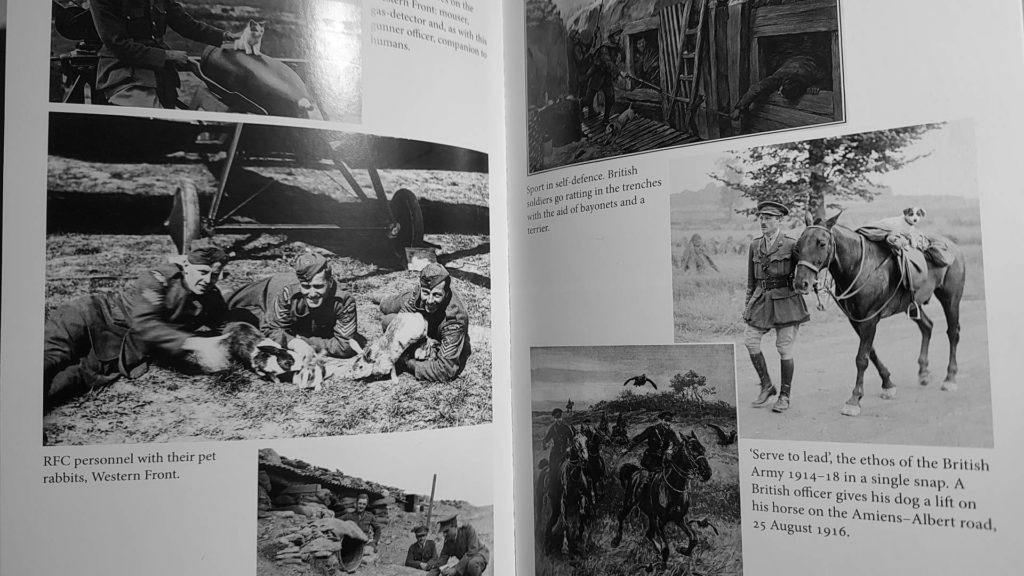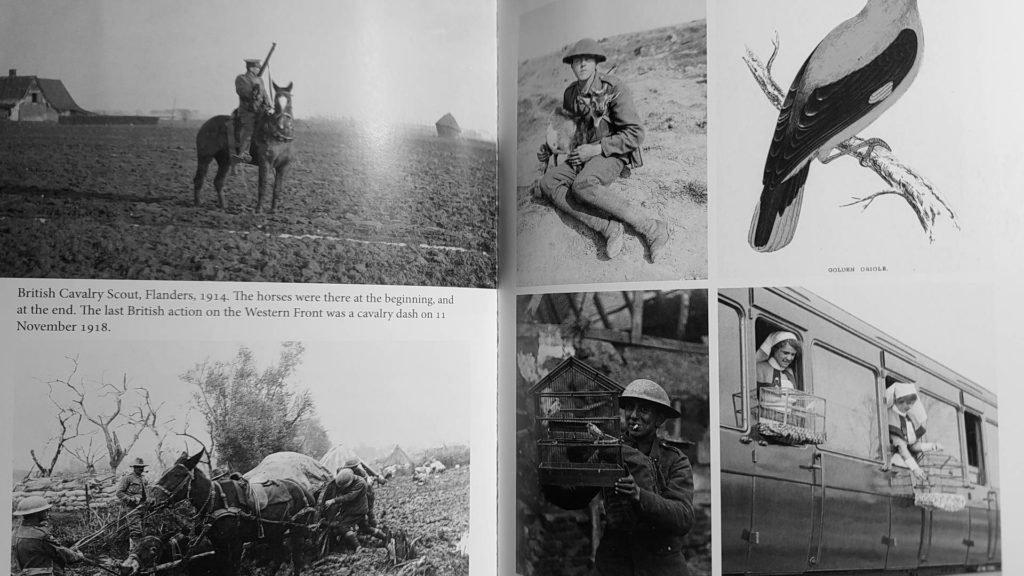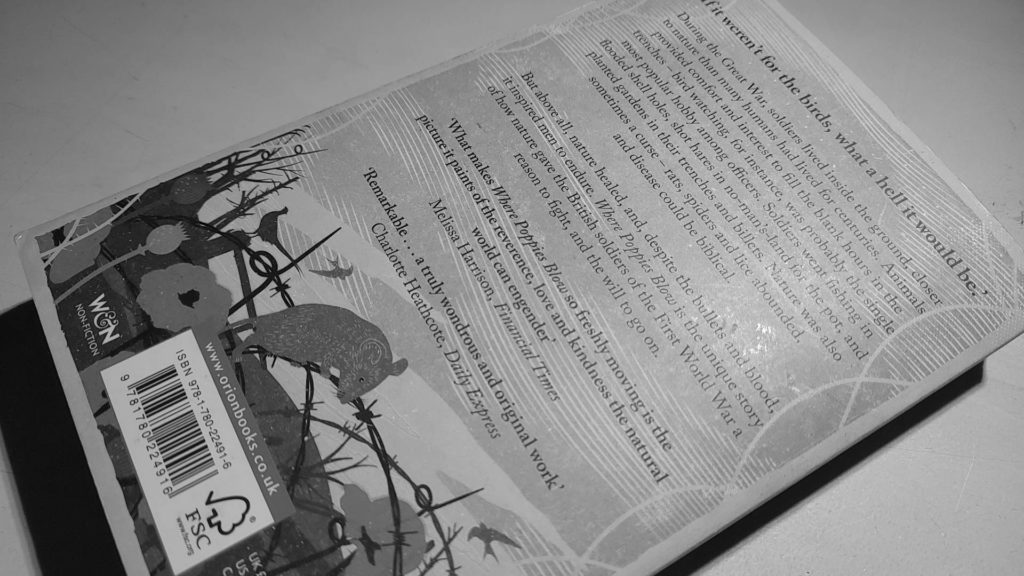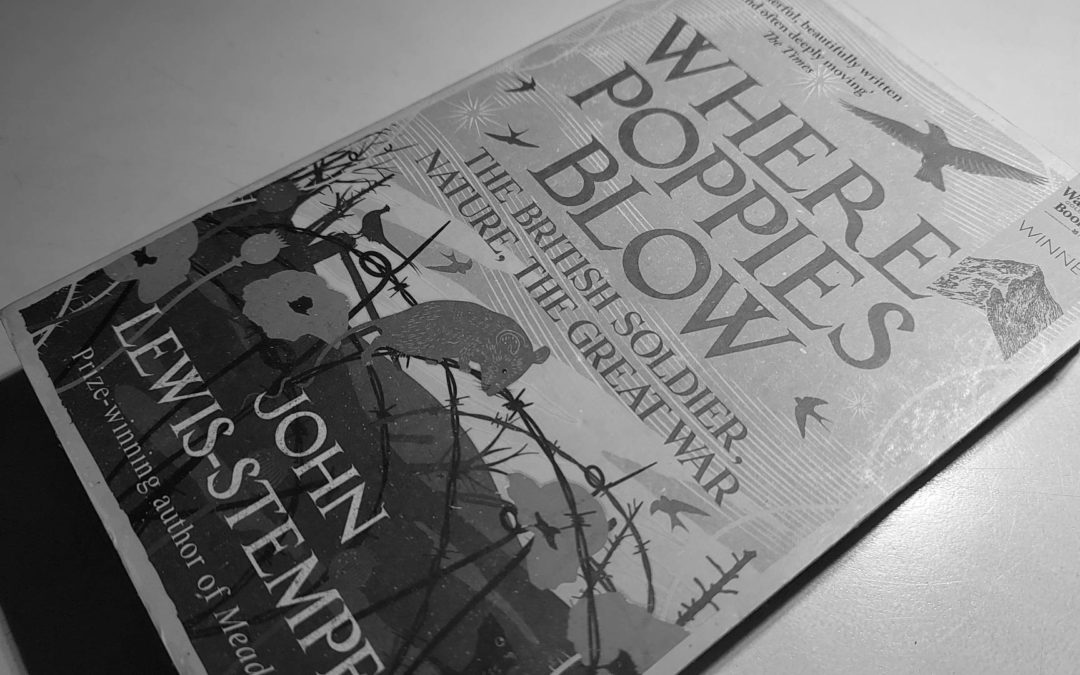The legacy of the Great War revolves mostly around the death and destruction it brought upon Europe. It wiped away the old and arguably gave way for even more conflict. However, even in the horrors of trench warfare, one may find beauty and solace. Despite its destruction by artillery shells, nature persevered and helped the average soldier cope with the horrifying reality of warfare. For today’s reading, let’s take a closer look at one of the most unique thematic approaches of World War I. Let’s take a look at the book Where Poppies Blow: The British Soldier, Nature, the Great War.

Beauty and solace amongst all-out destruction
What drew me to the book was its subtitle and cover. The poppy is a well-known symbol of World War I and many of us know the origins of its symbolism. Yet this book goes beyond the symbolism of the poppy, diving deeper into the symbolism of nature for the British soldier. John Lewis-Stempel does this for example by looking at the animals that played a role on the front. For example, one chapter is entirely dedicated to birds and what role they played for the soldiers. Of particular note was the nightingale, invoking joy and sadness alike in the British soldier with its beautiful singing. Alternatively, there’s the magpie, showcasing the horrors of war. Horses, rabbits, goats, and many more animals are also discussed.
Of course, rats and lice play the role of the ominous villains in this story. Far from only delivering beauty, nature also had its way with the soldiers on its own. Having to deal with lice and rats on a daily basis, meant that not every animal was welcomed in the trenches. Perhaps more importantly though, is that even these cumbersome creatures added to the front experience and to the subcultures that developed for the soldiers. One cannot describe front life without these affronts of nature and John Lewis-Stempel delivers an all-round experience of war to us.

Thematically unique
So concretely, the book tells us about instances of man’s interaction with nature in the form of animals, both wild and domestic. It is however the overarching theme that sells the book and connects everything together. Nature is its own force, and even through the horrors of war, it primarly shows us the beauty of life. Even amongst these gut-wrenching conditions, one cannot help but (un)consciously feel connected to the beauty that nature provides us. Vice versa, soldiers wrote about these encounters with the flowers, the air, the animals, and thus influenced the way we look at what nature provides us with.
John Lewis-Stempel therefore gives us an unique insight into the Victorian mindset of the British soldier. As a pivotal breaking point between the old and the new, the experience of British soldiers during World War I shows us how the old world looked at the beauty of its surroundings and how important nature was to the British Zeitgeist.
This darkening will move on
It is perhaps no mere coincidence that it was the trenches of Belgium where J.R.R. Tolkien first began writing about the beauty and serenity of Middle Earth. Although many writers that survived the Great War went on to become pessimistic about the future of mankind, Where Poppies Blow shows us how the opposite may also be true. That even in the most depraving situations, one may find beauty in its surroundings. If you want to read more about this connection between man and nature through the eyes of the British soldiers and learn some cultural meanings of certain plants or animals, give this book a read. Like the synopsis on the back says, ‘But above all, nature healed, and, despite the bullets and blood, it inspired men to endure.’


Recent Comments